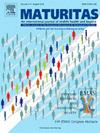Understanding Parkinson's: The microbiome and machine learning approach
IF 3.9
2区 医学
Q2 GERIATRICS & GERONTOLOGY
引用次数: 0
Abstract
Objective
Given that Parkinson's disease is a progressive disorder, with symptoms that worsen over time, our goal is to enhance the diagnosis of Parkinson's disease by utilizing machine learning techniques and microbiome analysis. The primary objective is to identify specific microbiome signatures that can reproducibly differentiate patients with Parkinson's disease from healthy controls.
Methods
We used four Parkinson-related datasets from the NCBI repository, focusing on stool samples. Then, we applied a DADA2-based script for amplicon sequence processing and the Recursive Ensemble Feature Selection (REF) algorithm for biomarker discovery. The discovery dataset was PRJEB14674, while PRJNA742875, PRJEB27564, and PRJNA594156 served as testing datasets. The Extra Trees classifier was used to validate the selected features.
Results
The Recursive Ensemble Feature Selection algorithm identified 84 features (Amplicon Sequence Variants) from the discovery dataset, achieving an accuracy of over 80%. The Extra Trees classifier demonstrated good diagnostic accuracy with an area under the receiver operating characteristic curve of 0.74. In the testing phase, the classifier achieved areas under the receiver operating characteristic curves of 0.64, 0.71, and 0.62 for the respective datasets, indicating sufficient to good diagnostic accuracy. The study identified several bacterial taxa associated with Parkinson's disease, such as Lactobacillus, Bifidobacterium, and Roseburia, which were increased in patients with the disease.
Conclusion
This study successfully identified microbiome signatures that can differentiate patients with Parkinson's disease from healthy controls across different datasets. These findings highlight the potential of integrating machine learning and microbiome analysis for the diagnosis of Parkinson's disease. However, further research is needed to validate these microbiome signatures and to explore their therapeutic implications in developing targeted treatments and diagnostics for Parkinson's disease.
理解帕金森氏症:微生物组和机器学习方法。
鉴于帕金森病是一种进行性疾病,症状会随着时间的推移而恶化,我们的目标是通过利用机器学习技术和微生物组分析来提高帕金森病的诊断。主要目的是确定特定的微生物组特征,这些特征可以重复地区分帕金森病患者和健康对照。方法:我们使用NCBI知识库中的四个帕金森相关数据集,重点是粪便样本。然后,我们使用基于dada2的脚本进行扩增子序列处理,并使用递归集成特征选择(Recursive Ensemble Feature Selection, REF)算法进行生物标志物发现。发现数据集为PRJEB14674,测试数据集为PRJNA742875、PRJEB27564和PRJNA594156。Extra Trees分类器用于验证所选特征。结果:递归集成特征选择算法从发现数据集中识别出84个特征(扩增子序列变体),准确率超过80%。Extra Trees分类器显示出良好的诊断准确率,其在接收者工作特征曲线下的面积为0.74。在测试阶段,分类器在各自数据集的接收者工作特征曲线下的面积分别为0.64、0.71和0.62,表明分类器的诊断准确率足够高。该研究确定了几种与帕金森病相关的细菌分类群,如乳酸杆菌、双歧杆菌和玫瑰菌,这些细菌在帕金森病患者中增加。结论:这项研究成功地鉴定了微生物组特征,可以在不同的数据集上区分帕金森病患者和健康对照。这些发现突出了将机器学习和微生物组分析结合起来诊断帕金森病的潜力。然而,需要进一步的研究来验证这些微生物组特征,并探索它们在开发针对帕金森病的靶向治疗和诊断中的治疗意义。
本文章由计算机程序翻译,如有差异,请以英文原文为准。
求助全文
约1分钟内获得全文
求助全文
来源期刊

Maturitas
医学-妇产科学
CiteScore
9.10
自引率
2.00%
发文量
142
审稿时长
40 days
期刊介绍:
Maturitas is an international multidisciplinary peer reviewed scientific journal of midlife health and beyond publishing original research, reviews, consensus statements and guidelines, and mini-reviews. The journal provides a forum for all aspects of postreproductive health in both genders ranging from basic science to health and social care.
Topic areas include:• Aging• Alternative and Complementary medicines• Arthritis and Bone Health• Cancer• Cardiovascular Health• Cognitive and Physical Functioning• Epidemiology, health and social care• Gynecology/ Reproductive Endocrinology• Nutrition/ Obesity Diabetes/ Metabolic Syndrome• Menopause, Ovarian Aging• Mental Health• Pharmacology• Sexuality• Quality of Life
 求助内容:
求助内容: 应助结果提醒方式:
应助结果提醒方式:


